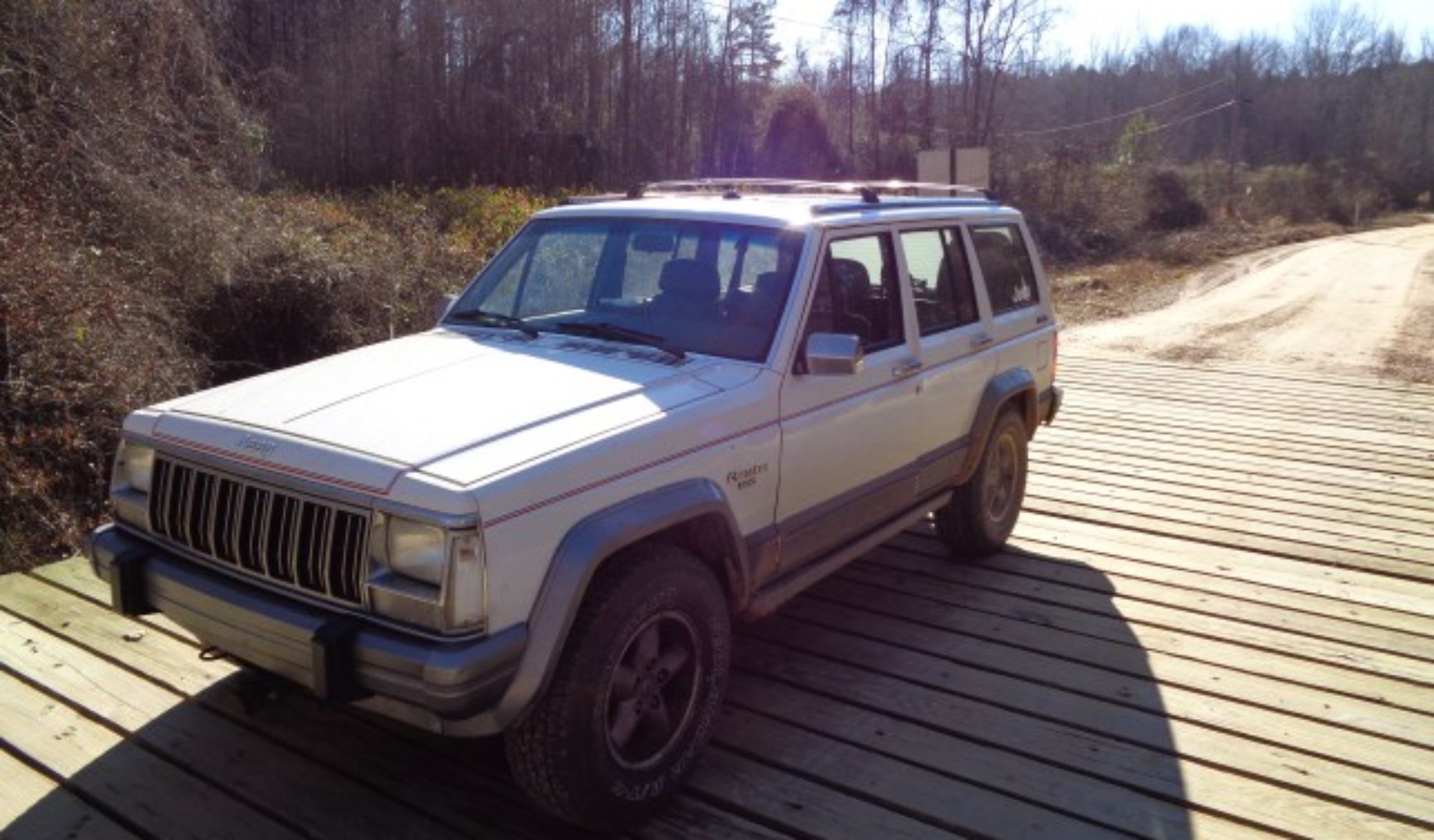Torque Converter Lockup troubleshooting – The Red Jeep Saga
Scott’s almost has the red Jeep ready for paint. But there has been one nagging problem that he wanted to resolve before he put in the effort to paint the truck – the transmission seemed to refuse overdrive and the torque converter refused to stay locked up.
At first the trouble was intermittent. It was especially frustrating that when I drove the Jeep, it shifted fine but when Scott drove it, it would refuse to stay in forth and the converter would not stay locked.
For those of you new to this story, this is a 1989 Jeep XJ Cherokee. It was bought for parts with a burned up wiring harness. Scott has put it back together and it runs and drives better than any other Jeep in our fleet – except for its weird electrical problems that occur from time to time.
Scott first tried swapping the throttle position sensor. No change. Next he tried swapping the whole transmission computer. No change.
We tested the resistance across all the transmission control solenoids. All were within spec.
Next we decided to use the diagnostic procedure for the later model Jeeps even though this is a Renix Jeep and uses a different transmission computer. It does however have the same model of transmission, the reliable Asin AW4.
We test-drove the Jeep with the transmission computer unplugged. It worked exalt as expected with first gear only in the 1-2 position, 3rd only in 3 position and OD only in D position. Of course no converter lockup is expected with the computer disconnected.
Next, I rigged up a jumper wire to test the converter lockup. I probed the white wire to the solenoid and the yellow power wire to the computer and made a jumper and had Scott drive us down the road. As I connected and disconnected the jumper we watched the rpms jump and we could feel the converter locking up. So it worked mechanically. Just the computer was telling it not to lock.
This test confirmed my earlier suspicions that the Transmission was actually shifting into over drive and the converter was locking for a second and then as if commanded by the computer it was unlocking and sometimes shifting back to third gear.
Next we brainstormed things that would cause the converter to unlock and read more in the manual about how the converter worked. We found that pressing down on the accelerator should unlock the converter as well as stepping on the brake.
As these two circuits are very different we had to resort back to the older manual with its less specific wiring diagram. We saw that a blue and yellow wire was supposed to carry the brake signal trigger. Having already changed the throttle position sensor we decided to work on the brake circuit first. Inspection of the brake light switch showed only pink and black wires. We took another test run and found that if the brake input wire was grounded, the torque converter would indeed lock up. This test confirmed our theory of the brake input being the trouble.
The wiring diagram was less than helpful has it simply showed the bleu/yellow wire going through a switch to ground. It gave no clue as to the physical location of this switch.
Scott crawled under the dash again and searched until he found the blue/ yellow wire. There was a second switch on the brake pedal above the brake light switch.
We probed the switch and found there was no change in it as the brake pedal was depressed. The switch indicated that the pedal was down all the time.
He pulled the switch out and we found that it would work intermittently out of the Jeep. So I took the switch apart and cleaned it with contact cleaner. Once back together, it worked reliably.
Scott reinstalled the switch and adjusted it to properly indicate when the pedal was depressed. We reattached the original transmission computer and buttoned everything back up.
A tryst drive showed that it work just as it was supposed to. So far the transmission continues to operate properly. A simple solution to a problem that had frustrated Scott for a couple of months now.



